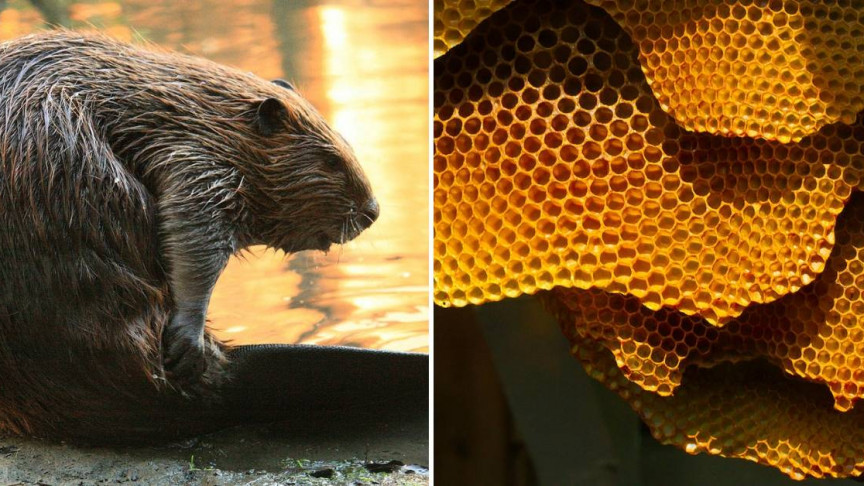Animals exhibit remarkable ingenuity in constructing shelters, showcasing the astonishing adaptability and resourcefulness inherent within various species. These architectural feats not only serve to protect them from the elements and predators but also create safe havens for nurturing offspring. This exploration delves into the myriad ways animals build shelters in the wild, shedding light on their impressive engineering capabilities while inviting readers to reconsider the inherent complexities of animal behavior.
From the simplest burrows to intricate nests, animals employ diverse strategies in shelter construction. The initial step often involves a careful selection of location—an aspect that is paramount for successfully establishing a domicile. Animals exhibit astonishing discernment when choosing sites; for example, some birds opt for tree canopies, harnessing the vertical space to evade ground predators, while others seek out sheltered nooks that provide protection from harsh weather conditions.
Starting from the underground world, let’s consider the unassuming yet masterful architecture of rodents. Many burrowing mammals, such as the European rabbit, possess an extraordinary capacity to excavate complex tunnel systems. These burrows, often referred to as warrens, can span extensive areas and contain various chambers serving distinct purposes. Typically, they incorporate nesting areas, food storage spaces, and escape tunnels, ensuring the occupants’ safety and comfort. The intricate nature of these structures highlights the evolutionary pressure that has sculpted their behaviors over millennia.
Similarly, the construction of shelters is not restricted to mammals. In the avian realm, birds exhibit an astounding variety of nesting techniques. The communal nests of sociable weavers in Africa serve as a prime example. These birds collaborate to create massive, multi-chambered nests that can accommodate numerous families. Constructed with grasses and twigs, these structures dangle precariously from tree branches and provide safety in numbers, a strategy that has evolved in response to predation pressures. This cooperation represents a nuanced level of social behavior, revealing how shelter-building can transcend mere survival.
In contrast, the architectural methods employed by bees illustrate an entirely different approach to shelter construction. Honeybees, for instance, exhibit remarkable organizational skills as they build their hives from beeswax. The hexagonal cells they craft not only offer perfect insulation but also maximize space utilization. This design showcases natural selection’s drive for efficiency and sustainability in the animal kingdom. Such intricate engineering demonstrates not only the resourcefulness of these insects but also their understanding of geometric principles—an impressive feat considering their minuscule size.
Transitioning to the marine environment, coral polyps present an astonishing model of communal shelter building. These tiny organisms, though themselves frail, collaborate extensively to construct vast coral reefs. By excreting calcium carbonate, they create robust structures that serve as habitats for countless marine species. The complexity of coral reef systems demonstrates nature’s capacity for large-scale engineering, highlighting the importance of these structures in maintaining biodiversity in ocean ecosystems. The interplay between individual organisms leads to a symbiotic relationship that enriches the environment, elucidating the interconnectedness of life in the wild.
Furthermore, various species of termites masterfully construct elaborate mounds that serve both as shelters and as climate regulators. These edifices are often equipped with intricate ventilation systems that help maintain optimal temperature and humidity levels within the nest despite external fluctuations. The staggering engineering capabilities of termites challenge our understanding of intelligence, as these creatures collaborate tirelessly to build and maintain their vast underground cities. Their ability to manipulate the environment exemplifies a profound evolutionary adaptation that speaks volumes about the deep-seated instinct for survival found across the animal kingdom.
Even the solitary beaver is a paragon of engineering prowess in constructing dams and lodges. These aquatic mammals create complex structures to provide both high ground for safety against predators and a submerged entrance to their lodges, ensuring they remain unseen while accessing their living quarters. The beaver’s ability to manipulate its environment by felling trees and blocking waterways showcases a degree of ecological foresight that is often overlooked. Their activities can significantly alter landscapes, leading to more extensive wetland ecosystems that benefit a multitude of species, indicating a wider ecological role in their habitat.
Mother Nature’s engineering extends to the realm of arachnids as well. Spiders exhibit a diverse range of shelter-building methods from web construction to burrowing into the ground. The orb-weaving spider, for instance, creates webs that not only serve as traps for unsuspecting prey but also act as a protective refuge. The silk produced is both durable and flexible, demonstrating the spider’s ability to engineer a multifunctional space that supports its survival and reproductive strategies.
In conclusion, the ability of animals to build shelters in the wild is a captivating testament to the intricacies of nature’s design. From the burrows of rodents to the coral reefs formed by polyps, each construction method reveals a different facet of evolutionary adaptations that foster survival and sustainability. As we ponder the engineering marvels of the animal kingdom, it is essential to recognize the profound interconnectedness of all life forms and the intricate web of relationships that sustain our planet. This shift in perspective not only piques curiosity but fosters a deeper appreciation for the ingenuity of nature, urging us to protect the incredible diversity that exists within our ecosystems.










